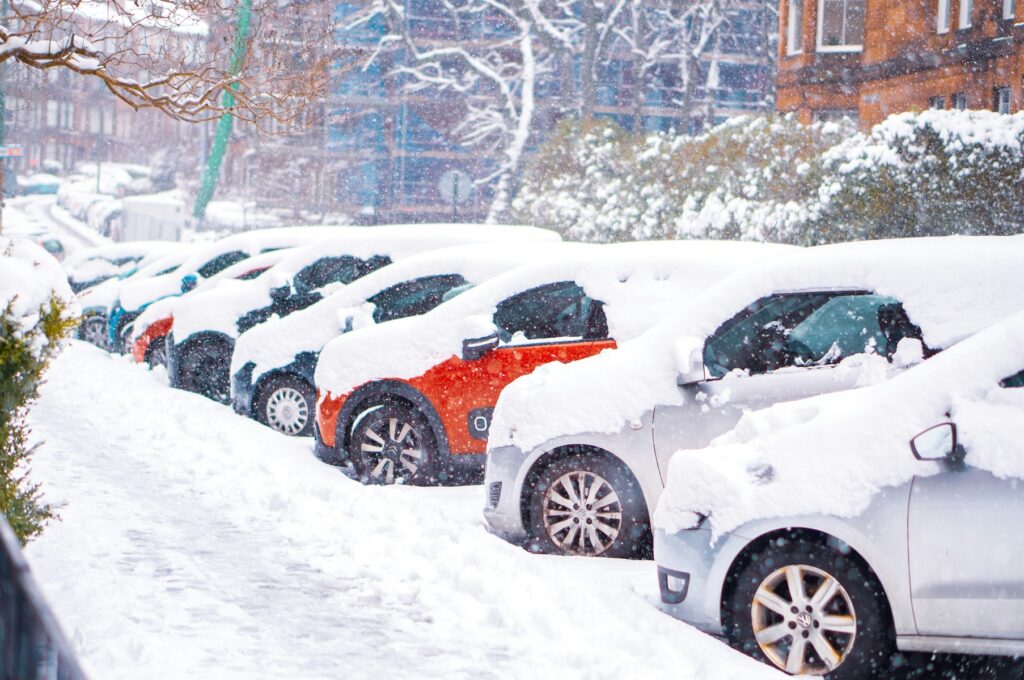
As electric vehicles (EVs) continue to gain popularity, it’s essential for owners to understand the unique challenges and considerations that come with driving these eco-friendly cars in winter conditions. The impact of cold weather on battery efficiency, range, and overall vehicle performance can be significant, and it’s crucial for EV drivers to be prepared for the unique demands of winter driving. In this comprehensive guide, we’ll explore the effects of cold temperatures on EVs, offer practical tips for maximizing performance and safety, and provide real-world case studies to illustrate the challenges and solutions faced by EV owners in winter.
Summary
Understanding the Impact of Cold Weather on EVs
Cold weather can have a profound effect on the performance of electric vehicles (EVs), influencing everything from battery efficiency to driving range. Understanding these impacts is crucial for EV owners who want to maintain optimal performance during winter months.
A. Battery Efficiency and Range Reduction
Cold temperatures can significantly reduce battery efficiency, leading to decreased driving range. Studies show that lithium-ion batteries, commonly used in EVs, can lose up to 20% of their capacity in frigid conditions. This means that an EV with a range of 250 miles in moderate temperatures might only achieve around 200 miles when the thermometer drops.
B. Regenerative Braking Challenges
Regenerative braking, a key feature in many EVs that helps recharge the battery while slowing down, can be less effective in cold weather. When temperatures fall, the battery may not accept the energy generated during braking, leading to reduced efficiency and longer stopping distances.
C. Heating Systems and Energy Consumption
Unlike traditional vehicles that rely on waste heat from the engine, EVs must use battery power to heat the cabin. This can further drain the battery, especially in extremely cold conditions. According to the U.S. Department of Energy, using the heater can reduce an EV’s range by approximately 20% to 50%, depending on the outside temperature.
D. Tire Performance and Traction
Cold weather can also affect tire performance. Tire pressure decreases in lower temperatures, which can lead to reduced traction and increased rolling resistance. Proper tire maintenance is essential to ensure safety and efficiency while driving in winter conditions.
E. Case Study: Real-World Experiences
A recent study by the Electric Power Research Institute (EPRI) examined the experiences of EV owners in northern climates. The study revealed that many drivers reported significant range anxiety during winter months, prompting them to adjust their driving habits and charging routines to accommodate the challenges posed by cold weather.
Tips for Driving EVs in Winter
Driving an electric vehicle (EV) in winter requires a bit of adjustment to ensure optimal performance and safety. Here are practical tips that can help you navigate winter driving conditions effectively.
A. Efficient Driving Techniques
Adopting efficient driving techniques can significantly enhance your EV’s performance in winter. Gentle acceleration and deceleration, along with maintaining a steady speed, can help conserve battery life. Utilizing cruise control on highways can also improve efficiency by reducing unnecessary speed fluctuations.
B. Utilizing Eco-Mode
Most EVs come equipped with an eco-mode feature designed to optimize energy consumption. Engaging this mode can help extend your range by limiting power output and adjusting climate control settings. This is particularly beneficial in winter when energy conservation is crucial.
C. Preconditioning Your Vehicle
Preconditioning your EV allows you to heat the cabin while it’s still plugged in, using power from the grid instead of the battery. This not only ensures a comfortable driving experience but also maximizes your driving range. Many EVs offer smartphone apps that allow you to set preconditioning schedules, making it easy to warm up your vehicle before you head out.
D. Tire Maintenance
Proper tire maintenance is essential for safe winter driving. Cold temperatures can cause tire pressure to drop, so check and inflate your tires to the recommended levels regularly. Additionally, consider switching to winter tires, which are designed to provide better traction on snow and ice, enhancing your vehicle’s grip and stability.
E. Charging Strategies
Plan your charging strategy to accommodate for reduced range in cold weather. Use public charging stations strategically and consider charging your EV overnight when temperatures are warmer. Additionally, if possible, avoid letting your battery drop below 20%, as this can further impact performance in cold conditions.
F. Stay Informed
Keep an eye on weather forecasts and road conditions. Being aware of upcoming storms or extreme cold can help you plan your trips better and avoid unnecessary risks.
Case Study: Real-World Experiences
To better understand the challenges faced by electric vehicle (EV) drivers in winter, let’s examine a case study that highlights their experiences and the solutions they implemented. This case study draws on data from a survey conducted by the Electric Power Research Institute (EPRI), which focused on EV owners living in northern climates where winter conditions are particularly harsh.
A. The Challenge
In the EPRI study, many EV owners reported significant range anxiety during the winter months. One participant, a resident of Minnesota, shared that their Tesla Model 3, which typically offered a range of 310 miles, dropped to around 200 miles in sub-zero temperatures. This reduction in range led to concerns about being stranded, especially when traveling longer distances or in areas with fewer charging stations.
B. Adaptations Made
To address these challenges, the participants in the study adopted several strategies:
- Adjusting Driving Habits: Many drivers began to alter their driving styles, focusing on smooth acceleration and deceleration. This approach not only improved energy efficiency but also enhanced safety on icy roads.
- Preconditioning: Participants utilized the preconditioning feature of their EVs to heat the cabin while still plugged in. This practice allowed them to enjoy a warm vehicle without depleting the battery before starting their journeys.
- Tire Maintenance: Recognizing the importance of traction, several drivers switched to winter tires, which provided better grip on snow and ice. Regularly checking tire pressure became a routine, as cold weather often caused it to drop.
- Strategic Charging: Drivers began to plan their routes more carefully, ensuring they had access to charging stations along the way. They also opted to charge their vehicles overnight, taking advantage of warmer temperatures to minimize battery strain.
C. Positive Outcomes
As a result of these adaptations, participants reported a more manageable winter driving experience. By implementing these strategies, they not only alleviated range anxiety but also improved their overall confidence in driving their EVs during colder months.
Solutions to Common Winter Driving Issues
Driving an electric vehicle (EV) in winter presents unique challenges, but there are effective solutions that can help mitigate these issues. By implementing the following strategies, EV owners can enhance their driving experience and maintain optimal performance during the colder months.
A. Preconditioning Your Vehicle
Preconditioning your EV before driving can significantly improve battery efficiency and range. By warming up the battery and cabin while the vehicle is still plugged in, you can reduce the energy drain that occurs when heating the vehicle on the go. Many modern EVs come with smartphone apps that allow you to schedule preconditioning, ensuring your vehicle is ready to go when you are.
B. Utilizing Eco-Mode
Engaging the eco-mode feature in your EV can help conserve energy and extend your driving range. This mode typically reduces power output, limits the use of high-energy features like the heater, and encourages smoother driving habits. Utilizing eco-mode during winter driving can help prevent wheel spin on icy roads and improve overall safety.
C. Maintaining Proper Tire Pressure
Cold weather causes tire pressure to drop, which can negatively impact traction and range. Regularly checking and inflating your tires to the recommended levels is crucial for safe winter driving. Additionally, consider investing in winter tires, which are designed to provide better grip on snow and ice.
D. Strategic Charging
Planning your charging strategy is essential during winter. Keep your battery topped up by charging overnight when temperatures are warmer and energy rates are lower. Avoid letting your battery drop below 20% to ensure you have enough capacity for heating and other functions.
E. Driving Techniques for Efficiency
Adjusting your driving style can help maximize your EV’s range in winter. Drive at moderate speeds, avoid rapid acceleration and braking, and use regenerative braking to recover energy while slowing down. These practices not only improve efficiency but also enhance safety on slippery roads.
F. Emergency Preparedness
Always be prepared for unexpected winter conditions. Before embarking on longer trips, identify charging stations along your route, and carry essential supplies such as warm clothing, blankets, food, and water in case you encounter delays or adverse weather.
